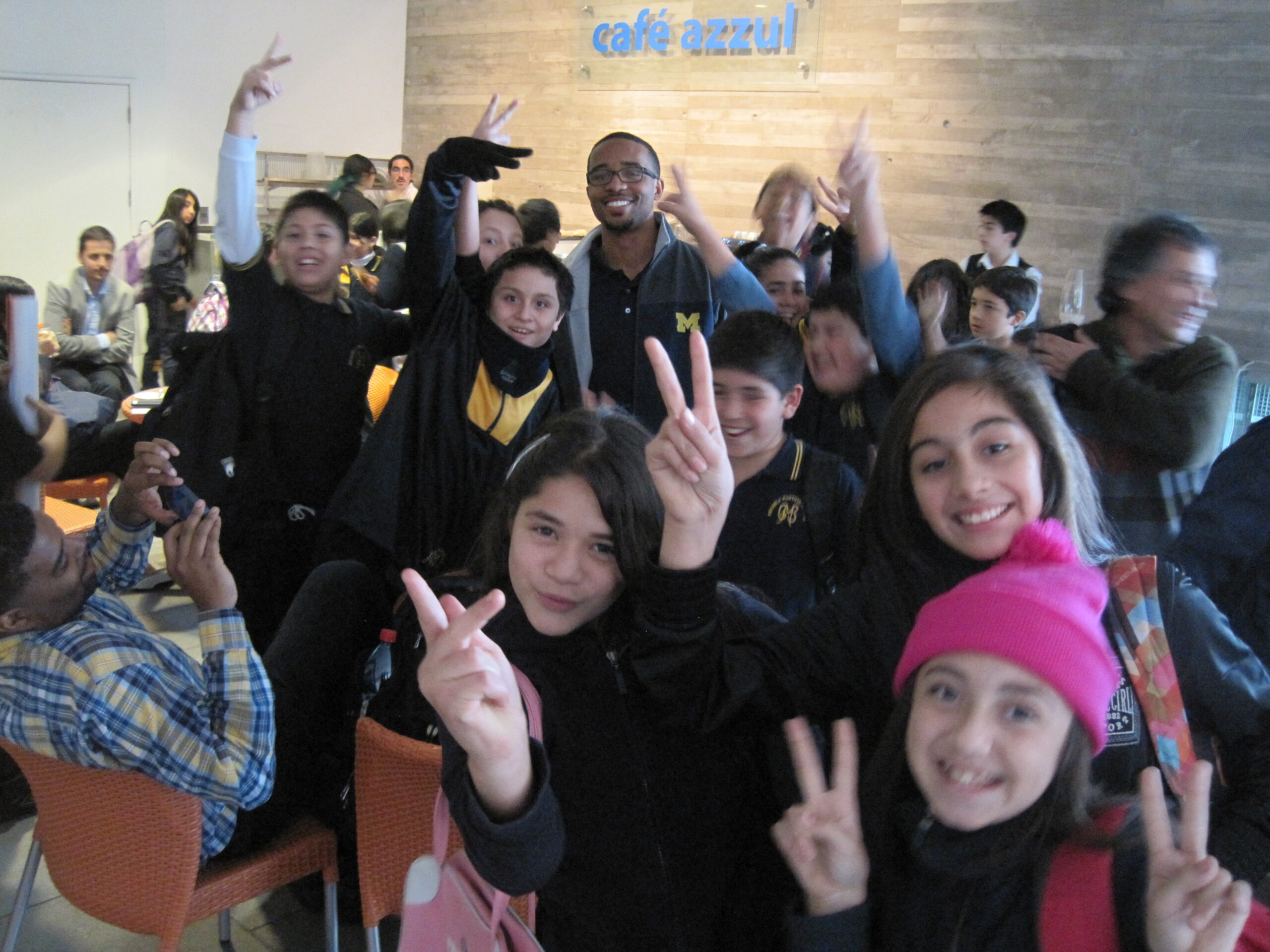On Thursday part of the group started out by meeting with higher education colleagues and faculty at the University of Chile to discuss teaching and learning. The entire group met later that morning to go through the human rights museum. While we were enjoying café and lattes at the little café outside the museum, a group of Chilean elementary students came up to us, shaking hands and wanting to take their photo with us because we were visiting Americans. 
The museum provided additional historical context for us to understand better Pinochet’s regime, the torture and disappearance of many thousands of Chileans, and events that shaped higher education until 1990. The visit provided a strong introduction for our meeting that evening with former student leaders, now all faculty members at the University of Chile.
We met the former student leaders in a classroom at one of the University of Chile campuses and pulled chairs into a circle so that we could ask questions and learn about the experiences of four individuals who were president of their student government in the late 1990s into the last decade. In Chile, the student government plays a strong political role, and president of this organization takes an academic leave while in that position in order to work full-time as that leader to enact change. The student organization was abolished for several years during the time Pinochet was in power, but was then brought back in the mid-1990s.

The former leaders discussed whether they had seen change or outcomes from student activism over the years. One asked, “What is impact? Is it the way people think what is possible…?” Although some policies have changed such as interest rates for student loans, the former leaders argued that injustice still exists and a need continues to advocate for rights and change in society.
As a break during our day, we also enjoyed lunch together at a good Peruvian restaurant located in the neighborhood near the museum.


